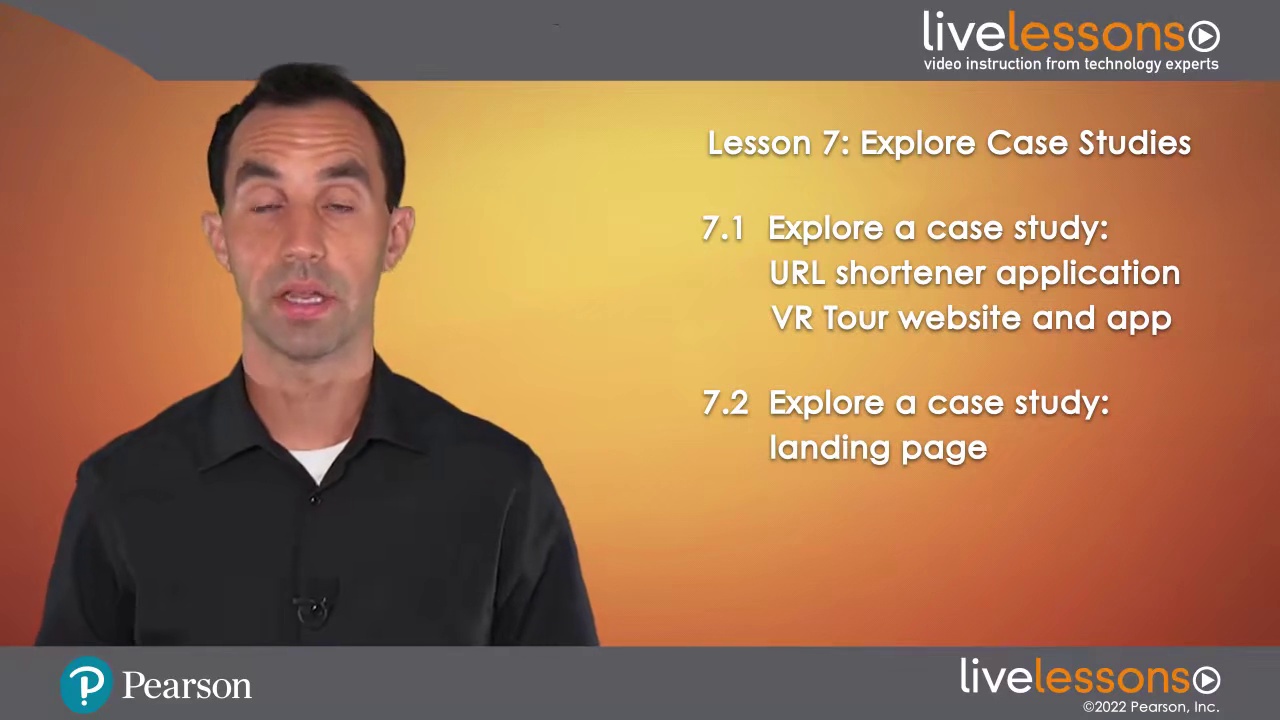01 - Introduction to User Experience Design - Introduction
02 - Learning objectives
03 - 1.1 Dive into terms
04 - 1.2 Understand the technology, business, and design of UX
05 - 1.3 Explore roles and responsibilities
06 - 1.4 Get into the UX mindset
07 - Learning objectives
08 - 2.1 Learn Jakob Nielsens 10 principles for interaction design
09 - 2.2 Visibility of system status
10 - 2.3 Match between system and the real world
11 - 2.4 User control and freedom
12 - 2.5 Consistency and standards
13 - 2.6 Error prevention
14 - 2.7 Recognition rather than recall
15 - 2.8 Flexibility and efficiency of use
16 - 2.9 Aesthetic and minimalist design
17 - 2.10 Help users recognize, diagnose, and recover from errors
18 - 2.11 Help and documentation
19 - Learning objectives
20 - 3.1 Build user-centered thinking
21 - 3.2 Learn the different UX disciplines
22 - 3.3 Lower the cognitive friction
23 - 3.4 Explore a case study - internal customer-service tool--Part 1
24 - 3.5 Explore a case study - internal customer-service tool--Part 2
25 - Learning objectives
26 - 4.1 Understand UX != UI
27 - 4.2 Explore the myth - Only UX professionals can improve the user experience
28 - 4.3 Explore the pitfall - User feature requests translate to good UX
29 - 4.4 Discover lazy or messy user interfaces
30 - Learning objectives
31 - 5.1 Create user flow
32 - 5.2 Craft sketches
33 - 5.3 Build wireframes
34 - 5.4 Add design
35 - 5.5 Finish with implementation
36 - 5.6 Explore a case study - coffee-shop website where users can subscribe to coffee of the day
37 - Learning objectives
38 - 6.1 Learn the three pillars - Happy, Satisfied, and Productive
39 - 6.2 Discover you are not the user
40 - 6.3 Giving users a path forward
41 - Learning objectives
42 - 7.1 Explore a case study - URL shortener application VR Tour website and app
43 - 7.2 Explore a case study - landing page
44 - 7.3 Explore a case study - mobile navigation College of Education redesign
45 - Learning objectives
46 - 8.1 See UI shapes, recognition versus recall
47 - 8.2 Add whitespace, grouping, and alignment
48 - 8.3 Experience animation, changes, and user feedback
49 - 8.4 Add colors and contrast
50 - 8.5 Build progressive disclosure
51 - Learning objectives
52 - 9.1 Explore the process
53 - 9.2 Build a test
54 - 9.3 Analyze the results
55 - 9.4 Iterate
56 - 9.5 Learn why not everything can be tested
57 - 9.6 Explore limitations of iterative design
58 - Learning objectives
59 - 10.1 Understand the business
60 - 10.2 Use user research at multiple points in the process
61 - 10.3 Sell design systems
62 - 10.4 Explore options for in-person research
63 - 10.5 Explore options for online research
64 - 10.6 Present tests and results
65 - Learning objectives
66 - 11.1 Learn dark patterns
67 - 11.2 Craft user-focused defaults
68 - 11.3 Build in security and privacy
69 - 11.4 Understand business goals versus user goals
70 - Learning objectives
71 - 12.1 Evaluate design from the outside in
72 - 12.2 Explore alternative input and output devices
73 - 12.3 Test on physical devices
74 - Learning objectives
75 - 13.1 Start with UX principles
76 - 13.2 Discover UX in action
77 - 13.3 Test and refine UX
78 - Introduction to User Experience Design - Summary

